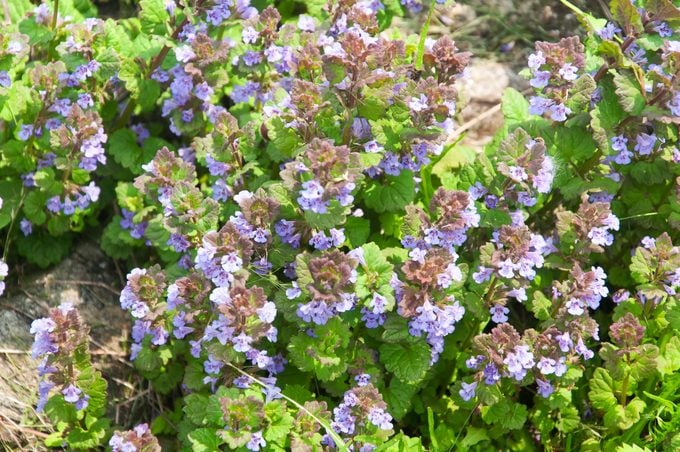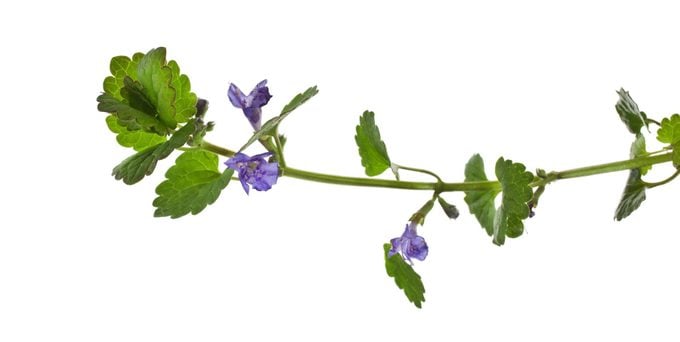Keep Creeping Charlie (Ground-Ivy) out of Your Yard
Updated: Feb. 29, 2024
Creeping Charlie is a weed that can quickly invade yards and flower gardens. Learn how to manage this aggressive weed.
How to Get Rid of Creeping Charlie Weeds

“What kills creeping Charlie? It’s taking over my lawn,” asks Birds & Blooms reader Houston Huling of Harriman, Tennessee.
Gardening expert Melinda Myers says, “Creeping Charlie (Glechoma hederacea), also known as ground-ivy, was originally brought to North America as a ground cover for shady areas. This is typically where the plant gets its start before spreading to other areas of the lawn and garden.
As you’ve discovered, this is a difficult weed to control. The best defense is to improve the growing conditions for your lawn grass so it’s able to outcompete the creeping Charlie.
Water and fertilize the lawn properly, increase the soil’s drainage, mow high, and overseed to increase the density, allowing your lawn to crowd out this and other weeds. Removing large populations of this weed by hand is difficult. Any piece of the stem that remains on the soil can start a new plant.
Apply a broadleaf weed killer when the plant is flowering in spring or fall after a hard frost. This can help with management. Do not use these weed killers in flower and vegetable gardens, as they can damage your desirable plants. As always, read and follow label directions carefully whenever using any natural, organic or synthetic chemical in your landscape.”
Get expert tips for identifying common weeds in your yard.
What Does Creeping Charlie Look Like?

Melinda says, “It’s easy to identify creeping Charlie by its round, scalloped leaves, which are fragrant when crushed. This shade-tolerant plant with purple spring flowers can quickly take over a lawn or garden bed.”
Next, learn how to get rid of dandelions in your yard.
About the Expert
Melinda Myers is the official garden expert for Birds & Blooms. She is a TV/radio host, author and columnist who has written more than 20 gardening books. Melinda earned a master’s degree in horticulture from the University of Wisconsin-Madison.
Sources
University of Wisconsin – Madison Division of Extension
Why Trust Us
For nearly 30 years, Birds & Blooms, a Trusted Media Brand, has been inspiring readers to have a lifelong love of birding, gardening and nature. We are the #1 bird and garden magazine in North America and a trusted online resource for over 15 million outdoor enthusiasts annually. Our library of thousands of informative articles and how-tos has been written by trusted journalists and fact-checked by bird and garden experts for accuracy. In addition to our staff of experienced gardeners and bird-watchers, we hire individuals who have years of education and hands-on experience with birding, bird feeding, gardening, butterflies, bugs and more. Learn more about Birds & Blooms, our field editor program, and our submission guidelines.





















